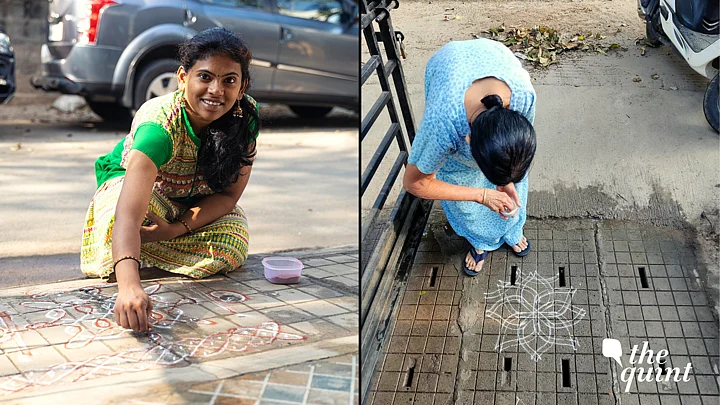The first time I visited Bengaluru, white coloured rangolis at the entrances of old houses in the city looked fascinating. “What a small but lovely part of the culture,” I thought. Therefore, I decided to capture the women behind these rangolis or hostilu as they are called in Kannada.
Speaking to The Quint, 37-year-old Sushma Rao, a photographer in the city, said, "Ever since I have memories of my childhood, maybe six or seven years old, I have been drawing Rangoli. It has become a way to start each day."
Answering what it means to her, Rao said, "As the old saying goes 'Cleanliness is next to Godliness,' a clean space helps you think better and feel positive. I can’t work if there is clutter in and around. So this cleaning ritual as the first thing in the day from outside to inside brings loads of positive energy into the house and to our minds."
Meanwhile, 82-year-old Nagarathna, who has been following this morning ritual for 70 years, told The Quint, "It's called Rangoli - Ranga Wali. Ranga referring to Sri Krishna, and Wali means to impress. So it's something we do to impress him. Initially we used to use rice flour. Since we had mud flooring which would be susceptible to ants and other small insects, using rice flour would help feed and thus distract them. Plus it was easy to find and use. Later we used 'belachu kallu' to prepare the powders. Nowadays we just use ready made rangoli powders."
Traditionally, Nagarathna explains, "We used to make Rangoli everyday at three places in our homes – in front of the house, next to the Tulsi katte (Tulsi deck) and in front of the Devara Mane (prayer place). Now it's mostly just in front of the house."
The next time you come to the southern state of Karnataka and see a white rangoli outside someone's home, you will know what it means to them.
(At The Quint, we question everything. Play an active role in shaping our journalism by becoming a member today.)
